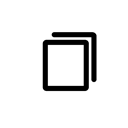Rothmund-Thomson syndrome (RTS) is a rare genetic disease that affects many parts of the body, particularly the skin. Typically, the condition starts out as a rash on the cheek which progresses to erthema, swelling, and blistering on the face and subsequently spreads to the buttocks and extremities. The rash evolves over months to years into the chronic pattern of reticulated hypo- and hyperpigmentation, punctate atrophy, and telangiectases.
The condition is caused by mutations in the helicase gene, RECQL4, which is the only gene associated with RTS to date. RECQL4 gene normally encodes ATP-dependent DNA helicase Q4 that has homology to a family of proteins known as RecQ helicases.
